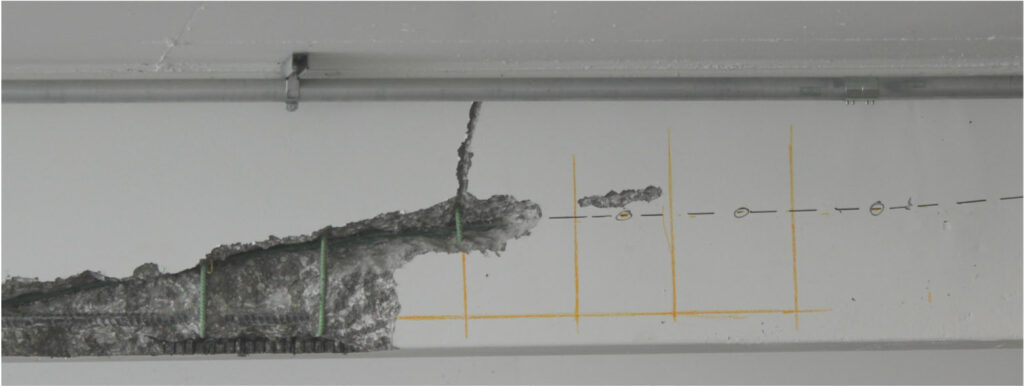Concrete Scanning: A Vital Action Towards Making Sure Architectural Integrity and Safety
In the realm of building and construction and infrastructure maintenance, the relevance of concrete scanning can not be overstated. This careful procedure holds the vital to introducing possible dangers hidden below the surface area of apparently solid structures. By utilizing sophisticated modern technology and approaches, concrete scanning works as a crucial device in making certain that the honesty and safety and security of structures and bridges are upheld to the highest possible requirements. Nevertheless, beyond its surface-level ramifications, the role of concrete scanning expands much much deeper than meets the eye.
Relevance of Concrete Scanning
Concrete scanning plays a critical role in making certain the architectural stability and security of buildings and framework projects. By using sophisticated modern technologies such as ground-penetrating radar (GPR) and electro-magnetic induction, experts can non-destructively check concrete frameworks to detect possible issues, spaces, embedded things, and reinforcement design. This procedure allows very early detection of anomalies that might endanger the stability of a structure, preventing expensive damages and making certain the security of residents.
Concrete scanning is especially necessary throughout the planning and building and construction phases of a project. Prior to drilling, reducing, or coring into concrete, scanning assists identify the precise places of rebar, post-tension cords, and other ingrained components, reducing the danger of accidental hits that might bring about architectural weaknesses. Additionally, concrete scanning help in quality assurance by confirming the density of concrete covers and finding any disparities that may influence the general longevity of the framework. Inevitably, buying concrete scanning services is not just a positive measure to reduce risks but also a basic step in the direction of preserving the long-lasting safety and security and stability of buildings and framework.
Technology for Concrete Assessment
Advantages of Very Early Detection
Prompt detection of architectural issues can substantially alleviate dangers and make certain the longevity of construction projects. By determining possible issues beforehand in the building and construction procedure, stakeholders can take aggressive measures to resolve concerns before they escalate right into larger and a lot more costly issues. Among the essential benefits of early detection is the prevention of structural failures, which can position major safety hazards and bring about task hold-ups and financial losses.
In addition, very early discovery allows for timely repair work and maintenance, which can aid expand the lifespan of the framework. By resolving issues immediately, building teams can prevent pricey repair services and even the requirement for premature substitute of structural components. This aggressive visit method not just saves money and time yet additionally improves the total security and durability of the building job.
Furthermore, early detection can improve job preparation and decision-making by providing stakeholders with beneficial insights right into the problem of the structure. Equipped with this info, project managers can make educated selections regarding building timelines, products, and approaches, leading to more successful and effective task results.
Guaranteeing Structural Security
Ensuring the structural stability of a construction task is vital to its security and longevity. Concrete scanning plays an important role in ensuring structural stability by detecting prospective problems such as spaces, delamination, or support corrosion that might jeopardize the honesty of the structure over time.
By making use of sophisticated scanning modern technologies like ground-penetrating radar (GPR) and electro-magnetic induction, building and construction specialists can non-invasively examine concrete structures to identify locations of concern under the surface area. This positive strategy enables the early discovery of weaknesses or defects, enabling prompt repairs or reinforcement to protect against structural failures.
Normal concrete scanning during various building stages and throughout the life cycle of a structure can help maintain its security, minimize risks, and guarantee the safety and security of owners. By focusing on architectural security through concrete scanning, construction projects can enhance their strength and longevity, inevitably adding to higher safety and security and longevity.
Avoiding Essential Failings
To safeguard against tragic occasions, precise tracking and positive upkeep are imperative in avoiding essential failures within architectural frameworks. Identifying prospective problems prior to they escalate is crucial to protecting against architectural failures. Carrying out regular assessments, such as concrete scanning, can reveal surprise problems like voids, cracks, or corrosion that can jeopardize the honesty of a structure. By making use of sophisticated scanning modern technologies like Ground Passing top article through Radar (GPR) or Concrete X-ray, engineers can non-destructively examine the problem of concrete and determine weak points that require reinforcement or repair - RainierGPR Service Areas.

Final Thought
To conclude, concrete scanning plays a crucial function in ensuring structural honesty and safety and security by using innovative innovation for early detection of prospective concerns. This positive strategy assists stop critical failures and makes sure the security of frameworks. It is vital to prioritize concrete evaluation as a basic technique to protect the long home life and safety and security of buildings and infrastructure.
Concrete scanning plays an important duty in making sure the architectural honesty and security of structures and facilities tasks. Additionally, concrete scanning help in top quality control by confirming the density of concrete covers and identifying any kind of disparities that might affect the total longevity of the structure. Concrete scanning plays an important function in guaranteeing architectural security by spotting possible issues such as spaces, delamination, or reinforcement rust that can compromise the stability of the framework over time.

In conclusion, concrete scanning plays an important duty in guaranteeing architectural honesty and safety by using innovative modern technology for early detection of possible concerns.